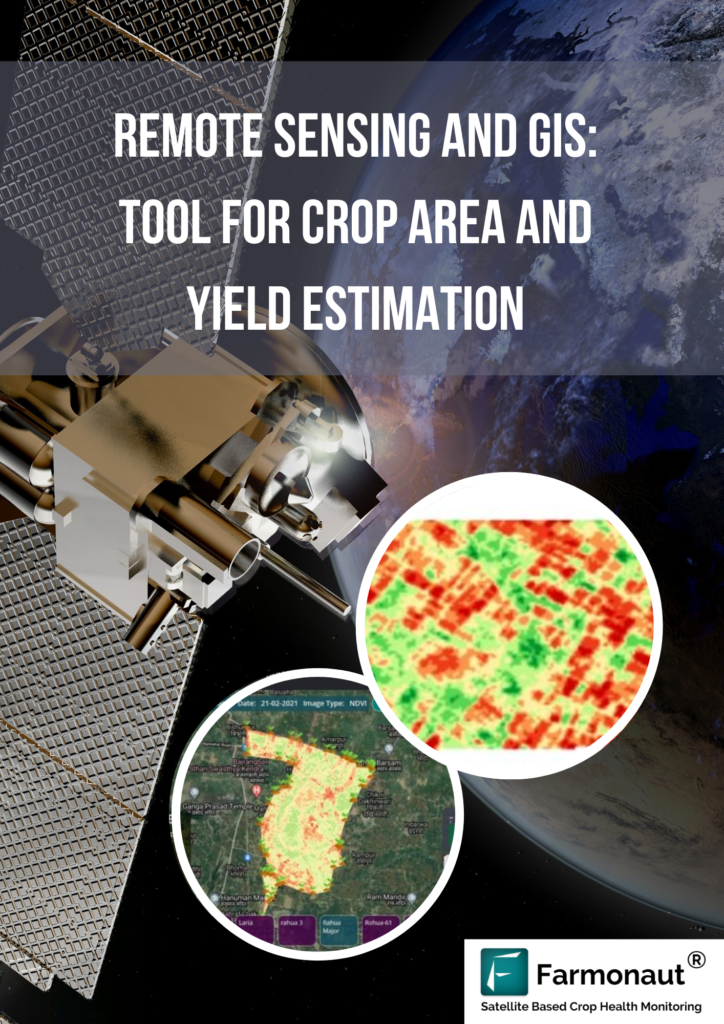Almond Tree Soil Requirements & Crop Loan Documents 2025: The Comprehensive Guide for Thriving Orchards
“Modern soil testing can improve almond yield by up to 30% by optimizing nutrient inputs and moisture levels.”
Table of Contents
- Introduction: Almond Cultivation 2025 & Beyond
- Soil Requirements for Almond Trees
- Cutting-Edge Soil Testing & Optimization Methods
- Essential Soil Factors & Improvement Strategies
- Water Usage Patterns & Precision Irrigation in Almond Orchards
- Smart Water Management: Digital & Satellite-Driven Solutions
- Sustainable Agricultural Practices in Almond Orchards
- Crop Loan Documents Required for Almond Farming in 2025
- Digitization & Automation of Crop Loan Documentation
- Essential Almond Orchard Requirements & 2025 Digital Loan Process Table
- Embracing Technology: Farmonaut’s Role in Future-Ready Almond Orchards
- FAQ – Almond Cultivation, Soil Requirements, Water Usage, and Loans 2025
- Final Thoughts & Next Steps
Introduction: Almond Cultivation 2025 & Beyond
The almond industry continues to expand rapidly within the global horticultural sector, driven by rising demand for almonds due to their nutritional benefits and versatile use in various food products. Almond cultivation is particularly vital in regions with Mediterranean climates, where the unique combination of warm, dry summers and cool, wet winters creates ideal conditions for healthy almond tree growth. To ensure successful almond farming in 2025 and beyond, it is crucial to understand and apply the most current knowledge about almond tree soil requirements, the latest innovations in water management and irrigation systems, and the increasingly digital process of crop loan documents required for orchard establishment.
With global climate change and environmental pressures intensifying, farmers are increasingly investing in sustainable, technology-driven methods to optimize every aspect of almond farming—from detailed soil analysis and real-time environmental monitoring to streamlined financial documentation and comprehensive risk management. In this guide, we explore the critical soil requirements for almond trees, water usage patterns and irrigation strategies, and the essential crop loan documentation needed to establish or expand almond orchards in 2025.
We’ll show how modern technology—including affordable satellite monitoring, precision irrigation, AI analytics, and digital loan applications—is transforming almond orchard management into a more productive, resilient, and financially viable endeavor.
Soil Requirements for Almond Trees: The Foundation of Thriving Orchards
Why Almond Tree Soil Requirements are Crucial in 2025
A core element in successful almond cultivation is a clear understanding of almond tree soil requirements. Almond trees are highly sensitive to suboptimal soil properties, making it imperative to optimize conditions before planting and throughout the lifetime of the orchard. The quality, structure, nutrient content, and drainage properties of the soil directly impact tree health, root penetration, yield, and nut quality.
Key Soil Properties for Almond Trees
- Texture: Ideal soils are well-drained loamy soils—a balanced mix of sand, silt, and clay.
- pH Range: 6.0–7.5 is optimal; slightly acidic to neutral enhances nutrient uptake.
- Aeration & Permeability: Soils must have good aeration and structure, allowing for deep root penetration and preventing root diseases and waterlogging.
Heavy clay soils, poorly drained areas, and waterlogged soils are unsuitable for almonds, given their shallow root oxygen requirements and susceptibility to fungal diseases. Testing and amending soils as required is strongly encouraged before orchard establishment.
Latest Advances in Soil Testing & Almond Soil Optimization
In 2025, farmers have access to a suite of modern soil testing and analysis methods that make it easier to determine nutrient profiles, soil health, and amendment needs. Cutting-edge satellite and IoT-based sensors provide precision mapping of soils, allowing us to pinpoint specific conditions at a micro-zone level within the orchard.
By leveraging these innovations, farmers can proactively manage soil’s crucial parameters and boost almond productivity while ensuring sustainable long-term orchard health.
Cutting-Edge Soil Testing: Technologies to Optimize Almond Tree Soil Requirements
Optimizing almond tree soil requirements demands comprehensive, precise testing that goes far beyond traditional methods. In 2025, the adoption of digital and satellite-driven approaches to soil testing is revolutionizing almond orchard establishment and maintenance:
- Satellite-Driven Soil Monitoring: Real-time assessments of soil moisture, salinity (EC), organic matter, and vegetation indices via multispectral imagery. Tools like ours at Farmonaut deliver actionable insights using these advanced data streams.
- AI-Enhanced Soil Analysis: Artificial intelligence (AI) processes soil test results, combining multispectral data and machine learning to pinpoint nutrient deficits and potential soil problems.
- IoT-Connected Soil Sensors: These in-field devices deliver granular readings for pH, moisture, temperature, and EC directly to mobile or web dashboards.
- Blockchain for Soil Traceability: Trace every soil input and management action to ensure transparency and demonstrate compliance for both loan documentation and sustainability standards. Explore how traceability platforms (learn more about Farmonaut Traceability) support almond growers’ needs in this domain.
How Soil Testing Informs Almond Orchard Planning
Comprehensive soil reports guide orchard planting patterns, recommend nutrient amendments, and predict disease risks. These reports are also an essential crop loan document required for availing agricultural financial schemes, validating soil suitability for banks or government agencies.
Essential Soil Factors & Improvement Strategies for Almond Trees
To get the most out of your almond orchard, several key soil parameters must be maintained and improved using sustainable methods:
- Organic Matter: Maintain content between 2–3% for improved soil structure, nutrient cycling, and moisture retention.
- Soil pH: Regularly monitor to keep in optimal range (6.0–7.5). Use lime for acidic soils and elemental sulfur for alkaline correction.
- Essential Nutrients: Nitrogen, phosphorus, potassium, calcium, magnesium—regular applications based on soil test recommendations are essential for optimal tree growth and nut yield.
- Soil Solarization & Biofumigation: Growing in popularity, especially in organic orchards, these methods use solar heat or organic amendments to suppress pests, nematodes, and soil-borne pathogens without chemicals.
- Avoidance of Waterlogging: Ensure orchard layout and soil have efficient drainage. Consider raised beds or subsurface drains where needed.
Remember, each almond orchard’s soil may differ. Detailed soil analysis using satellite-based or IoT sensors enables targeted improvement, helping farmers implement evidence-based strategies that drive productivity and profitability.
Quick Reference: Essential Almond Tree Soil Requirements
- Type: Deep, well-drained loamy soil
- pH: 6.0–7.5
- Drainage: Excellent; avoid heavy clay and waterlogged areas
- Organic Matter: Around 2–3%
- Nutrients: Balanced N-P-K, with sufficient organic or mineral matter
Water Usage Patterns & Precision Irrigation in Almond Orchards
Almond trees are deep-rooted perennials with high water usage needs, especially during key growth stages. However, excessive or poorly-timed irrigation can reduce yield, compromise nut quality, and increase susceptibility to root diseases.
Almond Trees Water Usage: How Much Water is Required?
- Annual Average Consumption: Mature almond trees require about 30–36 inches (approx. 750–900 mm) of water—roughly 9000–12000 liters per tree per year.
- Critical Phases: Water demand peaks during flowering, fruit set, kernel fill, and hull split. Yield and nut quality are highly sensitive to water availability during these periods.
- Consistency: Uniform, moderate irrigation is crucial. Over-irrigation can cause root disease and waterlogging (especially in poorly-drained soils).
With water scarcity and climate variability on the rise, precise irrigation strategies are more critical than ever for sustainable almond farming.
What is Precision Irrigation? Tools for Efficient Almond Trees Water Usage
Precision irrigation is the use of advanced technologies to supply the exact water quantity required by trees, at the correct time and location within the orchard. In 2025, leading almond growers harness:
- Drip Irrigation Systems: Deliver water directly to the root zone, significantly reducing evaporation and water waste.
- Soil Moisture Sensors: Monitor soil water status in real time to optimize scheduling of irrigation events.
- Evapotranspiration (ET) Models: Calculate precise water needs based on local weather data and almond tree crop coefficients.
- Remote Sensing: Satellite & drone imagery detect stress patterns, irrigation uniformity, and vegetation health.
- Deficit Irrigation Strategies: Intentionally apply less water during non-critical periods, saving water with minimal yield impact.
- Alternative Water Sources: Reclaimed water and rainwater harvesting buffer against drought and supply fluctuations.
Effective water management not only sustains yield and nut quality but is increasingly a key criterion for crop loan documents required by financial and government lending schemes.
Smart Water Management: Digital & Satellite-Driven Solutions for Almond Orchards
Digitization is transforming water management for almond orchards, bringing real-time monitoring, predictive analytics, and automated control to the fore. Satellite technology companies like us at Farmonaut deliver actionable insights through:
- Satellite NDWI Data: Monitor water stress and distribution across the orchard at scale, detecting irrigation gaps before they impact yield.
- AI-Based Water Use Forecasting: Integrated climate, soil, and crop growth data predict future water demands, enabling proactive scheduling and resource conservation.
- Automated Alerts: Get notified of critical moisture deficits, over-irrigation, or potential risk of diseases due to waterlogging through mobile or web apps. Access Farmonaut’s app for real-time orchard moisture insights.
These data-driven insights allow farmers to boost yield, optimize water usage, and demonstrate best management practices for lenders, insurers, and sustainability auditors.
Sustainable Agricultural Practices in Almond Orchards
Adopting sustainable farming methods isn’t just beneficial—it’s increasingly required. Practices such as cover cropping, organic amendments, conservation tillage, and carbon tracking all play a role in supporting the long-term productivity and resilience of almond orchards.
- Cover Crops: Boost organic matter, enhance structure, and minimize erosion between almond rows.
- Organic Amendments: Compost and green manures maintain beneficial microbial communities.
- Carbon Footprinting: Tracks orchard carbon emissions, helping farmers comply with evolving regulations and access funding. See how Farmonaut supports orchard carbon reporting.
- Integrated Pest Management: Combines biological, cultural, and digital methods to limit pest outbreaks and the need for synthetic inputs.
These strategies not only improve soil health, water usage, and overall crop management but are also recognized in government agricultural loan documentation and insurance assessments.
“Digital crop loan applications reduce document verification time by 50% for almond farmers seeking financial support in 2025.”
Crop Loan Documents Required for Almond Farming in 2025
Investing in a new or expanded almond orchard requires significant capital—often beyond what farmers can self-finance. Access to crop loans and government agricultural schemes is thus a critical component of orchard management.
Key Crop Loan Documents Required for Almond Orchards
In 2025, the trend is toward complete digitization of crop loan documentation. Below are the essential loan documents typically required for almond farming finance:
- Land Ownership Proof: Digital land records, lease agreements, or registered titles proving legal right to cultivate the orchard.
- Soil Test Report: A detailed soil analysis report from an accredited facility or digital platform, demonstrating suitability for almonds.
- Orchard/Farm Plan: Layout map showing irrigation systems, crop management strategies, and yield projections. Increasingly, these can be digital and GIS-based.
- Financial Statements: Personal and/or business accounts proving financial health and ability to manage loan repayments.
- Cost Estimates & Budget: Detailed breakdown of establishment and annual running costs: planting, irrigation installation, fertilizer, labor, pest control, etc.
- Government Identification: Aadhaar e-KYC (for India), landholding certificates, or equivalent local documents if seeking government-backed loans.
- Insurance Papers: Crop insurance documents covering drought, pest, and disaster risks (digital certificates increasingly preferred).
Note: Increasing adoption of online platforms shortens approval times, with pre-verified digital documents (e.g., e-KYC, online soil reports) reducing fraud and paperwork.
For more on how satellite-enabled digital verification supports the loan process, explore our dedicated resource on Farmonaut’s loan and insurance verification tools.
Digitization & Automation of Crop Loan Documentation: Efficiency in 2025
The digitization of crop loan documents required has revolutionized the landscape for almond orchard establishment:
- Online Applications: Complete all loan procedures remotely, with digital upload and e-signature of documents.
- API-Driven Verification: APIs streamline cross-verification with land and government records, reducing errors and manual checks. Explore our API and API Developer Docs to learn how satellite and financial data can be integrated for smarter almond orchard management and documentation.
- Digital Crop Insurance: Secure, paper-free insurance policies uploaded directly to loan profiles help safeguard orchard investments.
- Pre-Approved Packages: Many agribanks and cooperatives offer pre-approved loan schemes for almond farming based on digital assessment of soil, water, and crop parameters.
Adopting these approaches makes it easier for farmers to access funding, respond to lender queries, and comply with evolving regulatory and sustainability requirements—all with much less paperwork.
Larger growers can better coordinate inputs, labor, and equipment using digital fleet management and large scale farm management tools. These technologies minimize logistical bottlenecks and boost operational productivity for almond orchard businesses.
Essential Almond Orchard Requirements & 2025 Digital Loan Process
| Parameter | Estimated Optimal Value/Range | Modern Technology Used | 2025 Loan Document Type |
|---|---|---|---|
| Soil pH | 6.0–7.5 | IoT pH sensors, digital soil cards | Digital Soil Test Report |
| Soil Texture | Loamy (sand:silt:clay balance), well-drained | Remote sensing, field sensors | GIS-based Land Report |
| EC (Electrical Conductivity) | < 2 dS/m | EC probe sensors, satellite salinity index | Certified EC Analysis |
| Organic Matter (%) | 2% – 3% | Soil carbon sensors, satellite NDVI | Soil Carbon Content Certificate |
| Water Requirement (liters/tree/year) | 9,000–12,000 | AI water demand models, mobile IR sensors | Orchard Water Plan Report |
| Precision Irrigation Tool | Automated drip system, soil moisture sensors | Smart controllers, app-based scheduling | Digital Irrigation Plan |
| Soil Testing Method | Satellite, AI, IoT sensor | Mobile apps, digital farm management portals | Digital Soil Health Certificate |
| Required Digital Crop Loan Document | (N/A; see documentation column) | Online verification, e-KYC, blockchain traceability | Aadhaar e-KYC, digital land records, crop insurance certificate, digital budget |
Embracing Technology: Farmonaut’s Role in Future-Ready Almond Orchards
As a pioneering satellite technology company, we at Farmonaut empower almond orchardists, lenders, and agricultural insurers with data-driven, cost-effective solutions purpose-built for the digital agriculture era. Our platform delivers:
-
Satellite-Based Soil & Crop Monitoring:
Real-time insights into soil health (including almond tree soil requirements), crop health (NDVI), moisture, and EC—accessible from our web and mobile apps. -
AI-Driven Advisory (Jeevn AI):
Predictive farm management strategies, tailored to crop type, stage, and local climate—enabling farmers to optimize resource usage and boost productivity. -
Blockchain-Based Traceability:
End-to-end verification of all farm operations, critical for premium market access and efficient documentation in the digital crop loan process. -
Environmental Impact Monitoring:
Carbon footprint tracking for regulatory and market compliance—you can discover Farmonaut’s carbon reporting services here. -
Seamless Loan & Insurance Verification Workflows:
Digital document generation, verification via multispectral data, and API integration with banking and insurance platforms. See our crop loan and insurance solution for more. -
Scalable Solutions for Every Stakeholder:
From small farmers to large agribusinesses, governments, and FIs, our tools adapt to all operational scales. Explore our Large Scale Farm Management solution for big orchards.
All tools are available via apps (web, Android, iOS) and integratable APIs. Let Farmonaut be your strategic partner for thriving, sustainable, and future-ready almond orchards.
FAQ – Almond Cultivation, Soil Requirements, Water Usage, and Loans 2025
What are the top almond tree soil requirements in 2025?
Almond trees thrive in deep, well-drained loamy soils with a pH of 6.0–7.5 (slightly acidic to neutral), organic matter content of 2–3%, low EC, and good structure for root penetration. Avoid heavy clays, waterlogged, or salinity-prone soils.
How much water do mature almond trees consume each year?
On average, a mature almond tree requires 9000–12000 liters (or 30–36 inches/750–900 mm) of water per year. Water usage peaks during flowering, fruit set, and kernel fill, so precision irrigation is essential for maximum yield and nut quality.
Which modern tools help monitor and optimize almond orchard soil and water?
Farmers in 2025 can use satellite imagery, IoT soil sensors, AI advisory apps, blockchain traceability, and remote moisture monitoring—like those from Farmonaut—to manage orchard soil health, water use, yield projections, and documentation with scientific precision.
What documents are required for almond crop loans?
Crop loan documentation typically includes: digital land records, soil test report, orchard/farm plan, financial statements, cost estimate, government ID (e-KYC), and crop insurance papers. Most countries now accept digital/scanned copies through their loan application portals. Satellite verification reports are increasingly requested.
How does digitalization benefit almond farmers when applying for crop loans?
Digitalization slashes document verification time by up to 50% and reduces manual paperwork, fraud, and errors. With apps, APIs, and digital records, loan or insurance claims can be processed much faster—accelerating orchard development.
Can almond growers track carbon emissions for compliance and finance?
Absolutely! Use systems like Farmonaut’s carbon footprinting solution for regulatory compliance and to unlock climate-smart financing for sustainable almond orchard practices.
Final Thoughts & Next Steps: Future-Proofing Almond Orchards
The path to profitable, sustainable almond cultivation in 2025 is clear: optimize soil requirements through smart testing, use precision irrigation for efficient water management, and leverage digitized crop loan documentation for seamless access to finance. With the right approach, almond farmers not only ensure high orchard productivity and resilience but also meet evolving compliance and market expectations.
Digital tools and innovative technologies now empower growers to turn data into action—whether that’s improving yield with advanced soil assessments, conserving water using remote sensing, or accelerating finance with online loan solutions. If you’re getting ready to plant, expand, or refinance an almond orchard in 2025, use this guide to structure your journey.
To take the next step, try Farmonaut’s app, explore our cutting-edge traceability and carbon footprinting solutions, or access large-scale farm management tools for your orchard.
2025 and beyond will favor forward-thinking almond growers who use the full spectrum of agronomic, financial, and digital innovations to nurture orchard health and secure their investment for the future.










